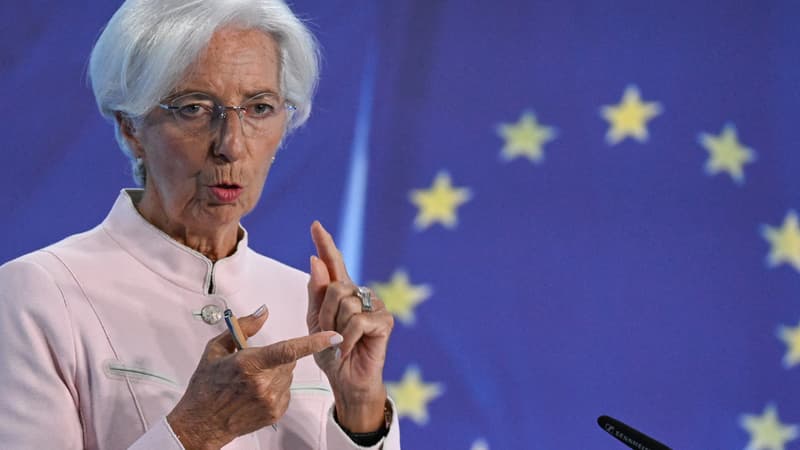The commercial agreement between Brussels and Washington “mitigated” but “certainly did not eliminate global uncertainty”, with “slightly higher” surcharges to what the ECB had planned in June, his president Christine Lagarde in Geneva said on Wednesday. “Uncertainty persists since the specific prices in the sectors of pharmaceutical and semiconductor products remain vague,” said the president of the European Central Bank at a meeting of the global economic forum in Geneva.
At the end of July, Brussels and Washington agreed to apply 15% of customs tasks on European exports to the United States, with the hope of exemptions for certain sectors. The agreement had been concluded a few days after the monetary meeting of the ECB, which had chosen to keep their interest rates without changes after a long cycle of cuts, a sign of prudence in the heart of the commercial confrontation.
Towards a slowdown in the euro zone activity
In fact, the average surcharge varies between 12 and 16%, according to Christine Lagarde, a “slightly higher, but still close” rate of the ECB hypotheses, used in its June macroeconomic forecasts. The Frankfurt institution had reduced its inflation projections for the euro zone, 2.0% for 2025 and 1.6% by 2026, due to the fall in energy prices and a higher euro. It also expected a slightly lower GDP growth, 1.1%, in 2026. The ECB also prepared for a more pessimistic scenario, with customs tasks greater than 20%.
Published in mid -September, the new inflation and growth forecasts will take into account “the consequences of the trade agreement,” said Christine Lagarde. According to the ECB, economic activity in the euro zone should decrease in the third quarter after a good start of the year. In recent weeks, Donald Trump has multiplied the additional customs of customs rights to certain sectors, such as pharmaceutical products that represent 20% of European exports to the United States.
Source: BFM TV


